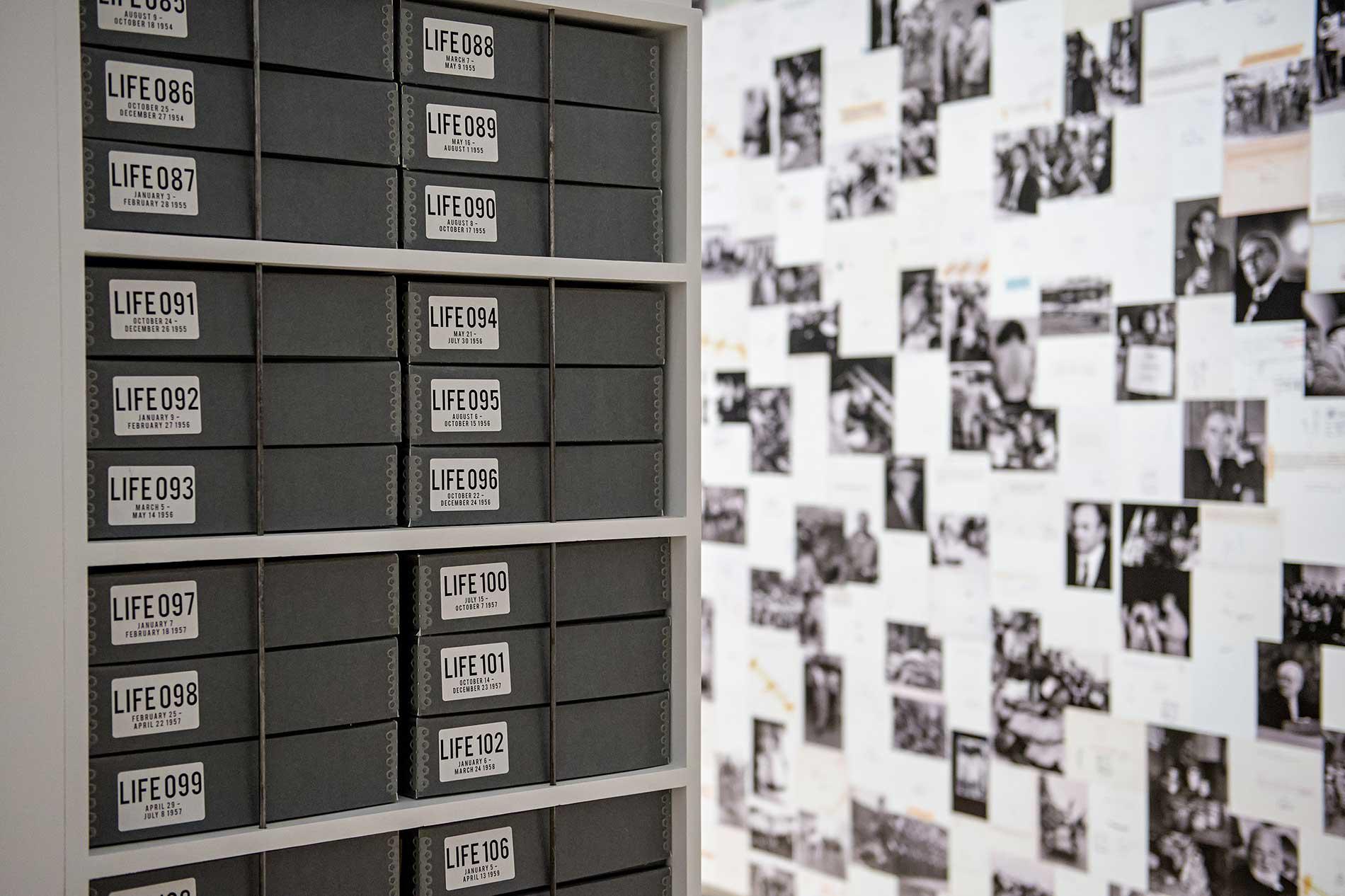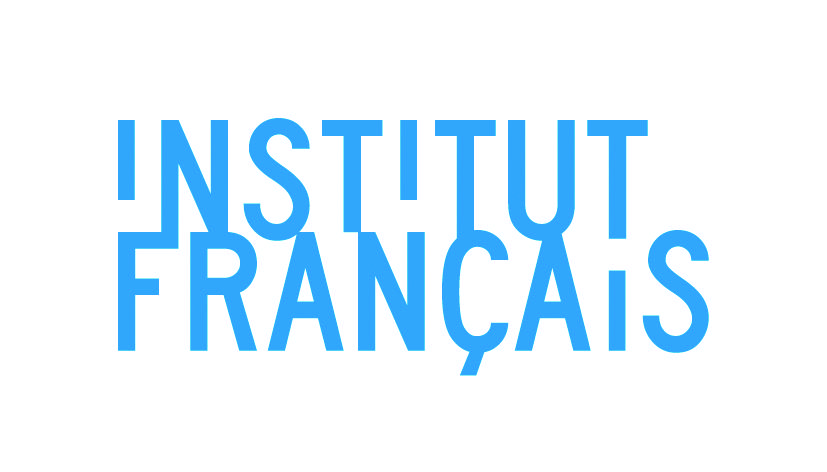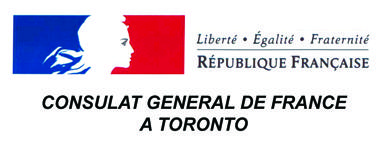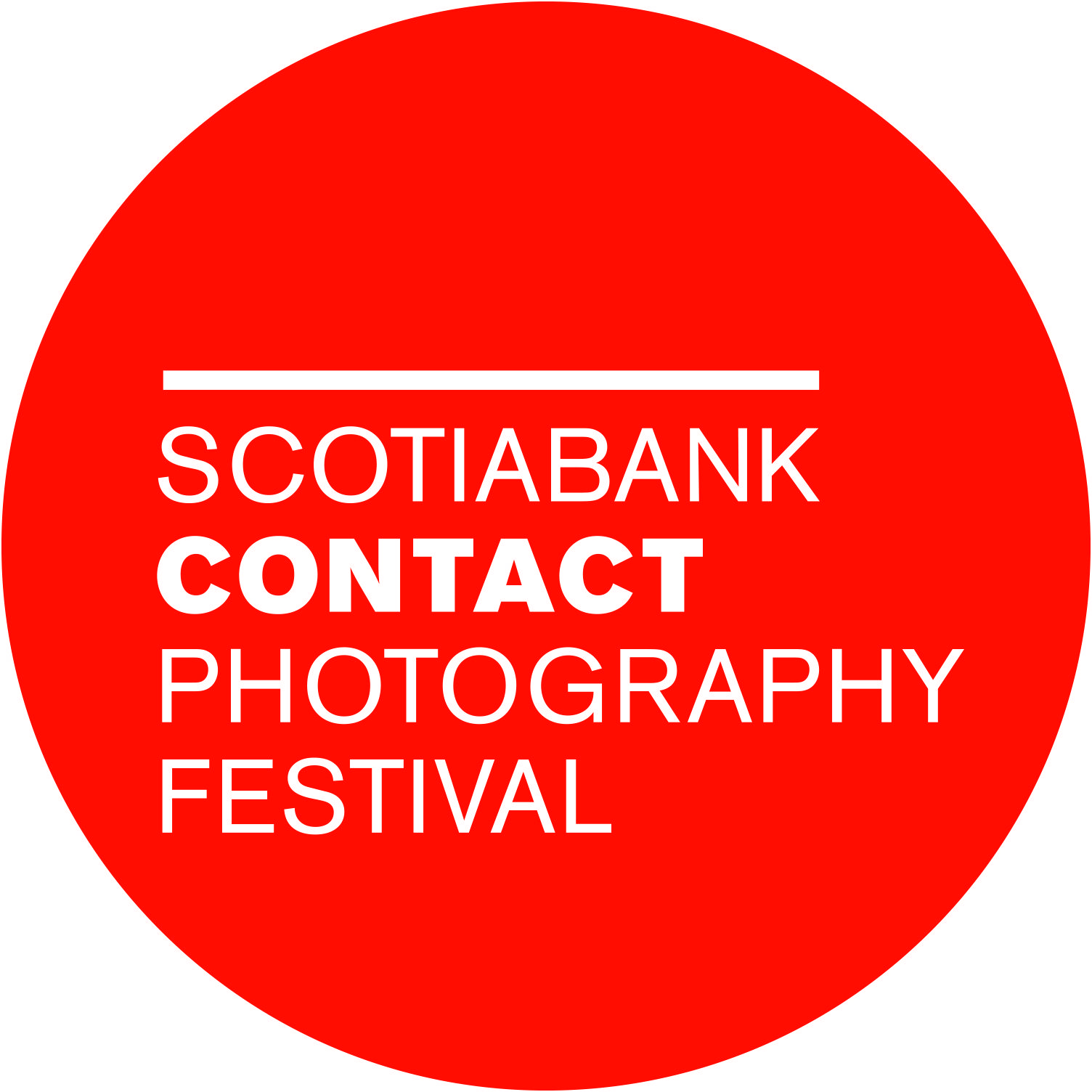The 'Public Life' of Photographs

Human Rights Human Wrongs (installation view), 2014 © Clifton Li, The Image Centre
About
The symposium is organized by The Image Centre (formerly Ryerson Image Centre) with support from lead sponsor, Partners in Art, as well as the Social Sciences and Humanities Research Council of Canada, the Institut Français and the Consulat Général de France à Toronto as part of Paris-Toronto. It is also co-presented with the Scotiabank CONTACT Photography Festival.
Information:
May 9-11, 2013
Eaton Lecture Theatre RCC-204
Rogers Communication Centre, 80 Gould Street
Registration:
Seating is provided on a first-come, first-served basis.
Watch Online:
Thursday, May 9
Friday, May 10
Saturday, May 11
The Image Centre (formerly Ryerson Image Centre) symposium “The ‘Public Life’ of Photographs” will analyze the dissemination of photographic images from the nineteenth century to the present. The reproducibility of a photograph largely determines how it is used, shared, and made accessible. While the advent of the Internet has increased the number of channels through which images can be accessed and shared, the circulation of photographs has long been possible through a variety of networks and media. The characteristic ubiquity and mobility of the photographic medium have always been necessary for illustration and the spread of visual information; exhibitions and publications have determined the artistic and cultural recognition of the medium; and artists have found a source of inspiration through the re-use and re-appropriation of old photographs. The dissemination of photographs is a topic that invites scholarship from diverse disciplines. Photography can perform a wide range of functions: it can be a vehicle of information, an instrument of ideology, a means of scientific exploration, and an artistic medium. The flexible nature of photography and its use within many different contexts demand a wide scholarly approach; this conference will therefore bring together experts in the history of photography, art history, philosophy, and visual culture.
The symposium will be divided into four panel discussions: “Photography in Public Narratives” will analyze photography’s role in the cultural construction of memory and ideology; “Market and Exhibitions of Photography” will demonstrate how economic exchanges have played a key role in the mobility of the photographic image and will examine how photographic exhibitions, whether in museums or less traditional venues, have played a major role in the circulation of photographic images; “Photographs in Print” will investigate how the press has participated in disseminating information and opinions through the use of photography; and “Public Photographs in Art” will focus on how the dissemination of photographs has helped artists gain recognition.
Programming
Thursday, May 9, 2013
Welcome & Keynote Address
6:00 p.m. – Welcoming Speech
Dr. Mohamed Lachemi, Provost and Vice-President, Academic of Toronto Metropolitan University (formerly Ryerson University) (Toronto, Canada)
6:10 p.m. – Research Activities at the The Image Centre (formerly Ryerson Image Centre)
Doina Popescu, Director, The Image Centre (formerly Ryerson Image Centre) (Toronto, Canada)
6:20 p.m. – Introduction
Dr. Thierry Gervais, Assistant Professor at Toronto Metropolitan University (formerly Ryerson University) and Head of Research at the The Image Centre (formerly Ryerson Image Centre) (Toronto, Canada)
6:40 p.m. – Opening keynote address: Mass Reproduction, Mass Distribution, Mass Publics
Prof. Joel Snyder, University of Chicago (Chicago, USA)
Friday, May 10, 2013
9:00 a.m. – Doors open
9:25 a.m. – Panel Introduction. Photography in Public Narratives
Prof. Marta Braun, Director of the Photographic Preservation and Collections Management Master’s program, Toronto Metropolitan University (formerly Ryerson University) (Toronto, Canada)
9:30 a.m. – In Modern Times: The Displacement of the Photograph
Dr. Geoffrey Batchen, Professor, Victoria University of Wellington (Wellington, New Zealand)
10:20 a.m. – Making Photography into Public Memory
Dr. Robin Kelsey, Professor, Harvard University (Boston, USA)
11:10 a.m. – Coffee break
11:40 a.m. – Displaying Forensic Pictures in Court: Photography as a Forum
Dr. Vincent Lavoie, Associate Professor, Université du Québec à Montréal (Montréal, Canada)
12:30 p.m. – Lunchtime
2:00 p.m. – Panel Introduction, Market and Exhibitions of Photography
Prof. Don Snyder, Toronto Metropolitan University (formerly Ryerson University)
2:05 p.m. – Buying and Selling Photographs in Nineteenth-Century Germany
Dr. Bodo von Dewitz, Former Curator and Deputy Director, Museum Ludwig (Köln, Germany)
2:55 p.m. – Questions of Art: Photography in the Museum
Sophie Hackett, Assistant Curator, Photography, Art Gallery of Ontario (Toronto, Canada)
3:45 p.m. – Coffee break
4:15 p.m. – The Ubiquitous Exhibition: Magazines, Museums, and the Reproducible Exhibition after World War II
Dr. Olivier Lugon, Professor, Université de Lausanne (Lausanne, Switzerland)
Saturday, May 11, 2013
9:00 a.m. – Doors open
9:25 a.m. – Panel Introduction, Photographs in Print
Dr. Thierry Gervais, Assistant Professor at Toronto Metropolitan University (formerly Ryerson University) and Head of Research at The Image Centre (formerly Ryerson Image Centre) (Toronto, Canada)
9:30 a.m. – No Innocent Eyes: Romana Javitz and the Picture Collection of the New York Public Library
Dr. Mary Panzer, Adjunct Professor, New York University (New York, USA)
10:20 a.m. – Queering Glamour in Interwar Fashion Photography: George Platt Lynes’ Multiple Publics
Dr. Elspeth Brown, Associate Professor, University of Toronto (Toronto, Canada)
11:10 a.m. – Coffee break
11:40 a.m. – The Photographic Icon vs. Visual Narration
Dr. André Gunthert, Associate Professor, École des hautes études en sciences sociales (Paris, France)
12:30 p.m. – Lunchtime
2:00 p.m. – Panel Introduction. Public Photographs in Art
Dr. Gaëlle Morel, Exhibitions Curator, The Image Centre (formerly Ryerson Image Centre) (Toronto, Canada)
2:05 p.m. – The Invisible Public Life of Colour Photography
Dr. Nathalie Boulouch, Associate Professor, Université Rennes 2 (Rennes, France)
3:55 p.m. – One of the Crowd: Conceptual Photography in Public
Dr. Heather Diack, Assistant Professor, University of Miami (Miami, USA)
3:45 p.m. – Coffee break
4:15 p.m. – Magnificent Propaganda: The Contexts of Walker Evans
David Campany, Reader in Photography, University of Westminster (London, UK)
Participants and Abstracts
In Modern Times: The Displacement of the Photograph
Professor, Victoria University of Wellington (Wellington, New Zealand)
Abstract
Imagine a history of photography freed from the tyranny of the photograph. No longer confined to precious commodities or specific technologies, this would be a history that addresses itself to the full implications of photography’s reproducibility—that is, to an accounting of dynamic relationships, not just static objects; to a tracing of dispersals rather than a celebration of origins. Breaking with the self-imposed ghetto of medium purity, photography’s history would at last engage the photographic image in all its various manifestations, wherever and in whatever form they have appeared. As a consequence, the dissemination of the photograph, rather than its production, would become this history’s new focus and guiding logic.
An emphasis on reproducibility has all sorts of ramifications for the kind of history we will henceforth be able to tell. For a start, it exponentially expands photography’s visual boundaries, allowing us to incorporate numerous images that only exist today as reproductions in other media. But it also ensures that the history of photography at last falls into synch with the political economy of its purported subject, tying the fate of the photograph to the processes and social implications of capitalist mass production. This paper will survey some of these implications as they were manifested in the careers of England's first two photography studios, run by Richard Beard and Antoine Claudet.
Biography
Geoffrey Batchen is the author and curator of numerous books and exhibitions on photography, including a 2004 exhibition of vernacular photographs for the Van Gogh Museum in Amsterdam, which subsequently traveled to the National Museum of Iceland, the National Museum of Photography, Film and Television in the UK, and the International Center of Photography in New York. He develops and leads the Centre for Art Research and Museum Studies at the Victoria University of Wellington, New Zealand.
The Invisible Public Life of Colour Photography
Associate Professor, Université Rennes 2 (Rennes, France)
Abstract
In the history of photography, there is one medium that is almost entirely invisible: colour photography. From the 1950s onwards, colour photography was quite present in the commercial and amateur photographic fields, but not in artistic institutions. This situation began to evolve at the end of the 1970s when the Museum of Modern Art curated William Eggleston's exhibition and published William Eggleston's Guide. From that date, colour photography began to have a public life in the art world. In this thesis, Boulouch aims to show that for much of the twentieth century, colour photography was excluded from the main sources of critical and cultural recognition: reproduction, publication, exhibition, and collection.
Biography
Nathalie Boulouch is Associate Professor in History of Art at Université Rennes 2. She is the Vice-President of the French Society of Photography in Paris, France, which holds one of the most important historical photography collections in the world. She is a renowned specialist in the history of colour photography and has curated numerous exhibitions on the subject. In 2005, she was awarded a two-year research grant by the Centre national de la recherche scientifique, France.
Queering Glamour in Interwar Fashion Photography: George Platt Lynes’ Multiple Publics
Associate Professor, University of Toronto (Toronto, Canada)
Abstract
This paper explores the relationship between fashion photography, sexuality, and the market in the 1930s and 1940s. Fashion photography has been central to the production of commercialized affect since Condé Nast hired his first staff photographer, Baron Adolph de Meyer, in 1917. In the 1930s, fashion photography on both sides of the Atlantic was dominated by queer photographers who, in dialogue with Hollywood photographers, produced a glamour aesthetic that was disseminated and marketed through both fan and fashion magazines. This paper will focus on two bodies of work by the American photographer George Platt Lynes (1907-1955). One set of work is his fashion photography for Condé Nast (Lynes was head of Vogue’s LA studio in the early 1940s); the other set of images is Lynes’ gay male nudes, which he made during the same years, and which he circulated privately due to concerns regarding obscenity prosecution. The paper argues that Lynes’ fashion photography was informed and shaped by his immersion in queer mid-century kinship networks and the complex erotic subcultures of mid-twentieth-century gay life (Lynes was one of Kinsey’s key informants in the early 1950s). In this reading, Lynes and his models collaborated in laundering the affective and erotic dimensions of their shared queer kinship networks through the heteronormative—and commercialized—front of mainstream fashion discourse.
Biography
Elspeth H. Brown is Associate Professor of History and Director of the Centre for the Study of the United States at the University of Toronto. She is the author of The Corporate Eye: Photography and the Rationalization of American Commercial Culture, 1884-1929 (Johns Hopkins, 2005), and co-editor of Feeling Photography (with Thy Phu, forthcoming, Duke University Press) and Cultures of Commerce: Representation and American Business Culture, 1877-1960 (Palgrave, 2006). Brown has published work in Gender and History, Feminist Studies, the Journal of American History, Enterprise and Society, Photography and Culture, History of Photography, and Afterimage. Her current research is a history of the modelling industry in the twentieth-century United States.
Magnificent Propaganda: The Contexts of Walker Evans
Reader in Photography, University of Westminster (London, UK)
Abstract
From placing anonymous documents in his photo-essays to seeing his own images reused by others, the American photographer Walker Evans was acutely aware of the relation between photographic meaning, context, and use. But by the time Pop and conceptual art were looking to appropriation and the photo as Duchampian Readymade, Evans had been canonized simply as a modernist master making photographs in the “documentary style.” In this paper, Campany returns to Evans' work in books and the illustrated press to see it as a precedent for post-60s photographic art.
Biography
David Campany is a writer, curator, and artist. His publications include Photography and Cinema (Reaktion, 2008), Jeff Wall: Picture for Women (Afterall/MIT 2011), Walker Evans: The Magazine Work (Steidl, 2012), and the artist's book Rich and Strange (Chopped Liver Press, 2012). In 2010 he co-curated Anonymes: Unnamed America in Photography and Film for Le Bal, Paris. He is a reader in photography at the University of Westminster, London.
One of the Crowd: Conceptual Photography in Public
Assistant Professor, University of Miami (Miami, USA)
Abstract
This paper will consider the changing notions of the public in order to find revealing parallels in conceptual art’s challenge to the traditions of art and photography, as well as propositions for reconfiguring broader social relations.
Despite the distinct influences of Pop art on early conceptual photography, conceptual artists of the 1960s often aimed to make work that was deliberately “unpopular.” Fascinated nevertheless by the photograph’s ability to disperse and multiply indefinitely, these practitioners also took the photograph seriously as an object of theoretical and material inquiry. The photograph’s direct engagement with mass media provided these artists with further fodder for critically questioning the medium and increased its viability as the central form of contemporary art. Arguably, the very notion of the “public life” of photographs, including the potentials of anonymity and mass circulation, is central to the work of many conceptual artists.
Biography
Heather Diack is Assistant Professor of Modern and Contemporary Art at the University of Miami, Florida. Previously a postdoctoral fellow at the University of British Columbia, Diack received her PhD from the University of Toronto, and is a graduate of the art history program at McGill University and the Independent Study Program of the Whitney Museum of American Art. Diack has contributed to Public, RACAR, Prefix Photo, Afterimage, C magazine, and Canadian Art, among others, and has presented papers internationally on topics related to twentieth-century art, photography, and theory throughout Europe and North America. Currently, she is working on a number of research projects, including the final manuscript for her book The Benefit of the Doubt: Regarding the Photographic Conditions of Conceptual Art, 1966-1973, and co-editing with Louis Kaplan a volume on the critical conjunction between conceptual art and humor, entitled Conceptual Art as Comedic Practice.
The Photographic Icon vs. Visual Narration
Associate Professor, École des hautes études en sciences sociales (Paris, France)
Abstract
This paper will state that most analyses of photojournalism focus on iconic photographs and iconic images in photography. These comprise a small group of images that are chosen by the profession of photojournalism and are representative of the narrative stereotypes created by the media industry. They are the most obvious manifestation of the hierarchical organization of information, based on semiotic criteria, of which photography has been an important component since the beginning of the twentieth century. Photographic “icons” provide the proof of and illustrate narrative visual practices in news media, an idea largely ignored by the profession, or uncritically accepted by it as a “magic” encounter between the objective and the aesthetic.
Biography
André Gunthert is Associate Professor at the École des hautes études en sciences sociales (EHESS) and director of Laboratory for Contemporary Visual History (Laboratoire d'histoire visuelle contemporaine—Lhivic). In 1996, he founded the peer-reviewed journal Études photographiques and in 2009 the first scientific social media initiative, Culture Visuelle. He has written and edited many articles and books on the history of visual culture, most notably L'Instant rêvé. Albert Londe (Chambon, 1993) and, with Michel Poivert, L'Art de la photographie (Citadelles-Mazenod, 2007).
Questions of Art: Photography in the Museum
Assistant Curator, Photography, Art Gallery of Ontario (Toronto, Canada)
Abstract
For a number of years, the Art Gallery of Ontario (AGO) has pursued a program of exhibitions that acknowledges a broad swath of photographic practice from acknowledged makers to the “collective states of photographic expression.” What does it in fact mean to bring this range of photographic objects in to an encyclopedic museum? Can fixed categories that relate to the context of production—art, commerce, fashion, promotion—properly account for what emerges in this exhibition context? The artist project Album: A Public Project at the AGO in May 2012 offers some possible new ways to consider the status and significance of these objects, and expand the histories of the medium through exhibitions.
Biography
Sophie Hackett is Assistant Curator of Photography at the Art Gallery of Ontario and adjunct faculty in Toronto Metropolitan University's (formerly Ryerson University) Master’s program in Photographic Preservation and Collections Management. She holds an MA from the University of Chicago and spent a year in the Department of Photographs at the J. Paul Getty Museum in Los Angeles in 2005-06. Since 1998, she has contributed to several Canadian art magazines, international journals, and artist monographs, and curated many exhibitions independently, including The Found and the Familiar: Snapshots in Contemporary Canadian Art (Gallery TPW, 2002). In her role at the Art Gallery of Ontario, she has curated or co-curated several exhibitions that integrate a broad range of photographic objects in the museum context, including Songs of the Future: Canadian Industrial Photographs, 1858 to Today (2011) and Album: A Public Project (2012). She was the lead juror for The Grange Prize in Contemporary Photography in 2010 and 2012.
Making Photography into Public Memory
Professor, Harvard University (Boston, USA)
Abstract
Since the explosion of photography in the popular press in the 1930s, the makers of public memorials have had to contend with the dominant role of photography in the formation of social memory. Felix de Weldon's Marine Corps War Memorial and Maya Lin's Vietnam Veterans Memorial exemplify radically divergent approaches to this problem. Whereas the Marine Corps War Memorial, by more or less replicating Joe Rosenthal's photograph of the flag raising on Iwo Jima, collapsed the memorial form into the press photograph, the Vietnam Veterans Memorial incorporated photography in subtle, complex, and heretofore overlooked ways.
Biography
Robin Kelsey is the author of Archive Style, a book on nineteenth-century American survey photography and illustration, and co-editor of The Meaning of Photography. He has received several awards for his scholarship and teaching, including the Arthur Kingsley Porter Prize from the College Art Association for an essay on the survey photography of Timothy H. O'Sullivan. He is at work on two books, one on photography and chance, and the other on photography in America during the Cold War.
Displaying Forensic Pictures in Court: Photography as a Forum
Associate Professor, Université du Québec à Montréal (Montréal, Canada)
Abstract
This paper focuses on the display of forensic photographs in recent trials and discuss how the law court is performing the evidentiary value of those probative pictures. More than just as visual evidence, forensic photographs will be considered within rhetorical procedure that empowers pictures as a site of public debate.
Since the 1990s forensic science has increasingly come to dominate our cultural imagination—a phenomenon that can be observed in popular fiction and television series that champion the infallibility of medico-legal expertise. From the Latin forensis, which means “public square, forum,” forensics is in part linked to the idea of legal argument, which is defined as a statement of facts for a court hearing. Forensics cannot thus be reduced to a mere technique or procedure that establishes facts: it is, rather, a discursive process whose claims to truth should not be taken at face value.
Biography
Vincent Lavoie is Associate Professor in the Département d’histoire de l’art, Université du Québec à Montréal (UQAM). He is a member of Figura, le Centre de recherche sur le texte et l’imaginaire (UQAM) and of the editorial board of the journal Études photographiques. Lavoie is the author of Photojournalismes. Revoir les canons de l’image de presse (Hazan, 2010) and of L’instant-monument. Du fait divers à l’humanitaire (Dazibao, 2001). He has published extensively on photography and visual imagery through contributions to exhibition catalogues, edited collections, and journals. Notably, he was artistic director of the 2003 Mois de la photo à Montréal and the editor of Maintenant. Images du temps présent (Mois de la photo à Montréal, 2003). He is also the editor of Imaginaires du présent. Photographie, politique et poétique de l’actualité (Observatoire de l’imaginaire contemporain, 2012)— the inaugural issue of Cahiers ReMix, an online series of working papers—and of the issue Forensics: Representations and Regimes of Truth (CV Ciel Variable: 93, 2013). His current research focuses on a critical examination of the evidentiary value of contemporary images.
The Ubiquitous Exhibition: Magazines, Museums, and the Reproducible Exhibition after World War II
Professor, Université de Lausanne (Lausanne, Switzerland)
Abstract
This paper will discuss the question of the photographic exhibition conceived as a means of dissemination and the complex relationship between exhibition and publication introduced by these ventures.
In the late 1940s and early 1950s, the idea of a mobile and reproducible form of exhibition, which would go on the road to meet people outside of city centres, became a goal shared by both museums and magazines. MoMA’s “multiples exhibitions” and “Life exhibitions” represented two examples of such a mass production of photographic shows, which could reach several hundred copies and be seen at several places simultaneously.
Biography
Olivier Lugon is Professor in the Section d’Histoire et esthétique du cinema et Centre des Sciences historiques et de la culture at the Université de Lausanne. His research has focused on German and American photography of the inter-war years, documentary photography, and exhibition design. His publications include La Photographie en Allemagne. Anthologie de textes, 1919-1939 (Chambon, 1997), Le Style documentaire. D’August Sander à Walker Evans, 1920-1945 (Macula, 2002), Between Still and Moving Images (co-edited with Laurent Guido, John Libbey Publishing, 2012), Exposition et médias : photographie, cinéma, télévision (L’Age d’Homme, 2012), and Le Pont transbordeur de Marseille (with François Bon and Philippe Simay, INHA/Ophrys, 2013). He was a Fellow at CASVA, Washington, DC, and Getty Scholar at the Getty Research Institute, Los Angeles.
No Innocent Eyes: Romana Javitz and the Picture Collection of the New York Public Library
Adjunct Professor, New York University (New York, USA)
Abstract
This talk will describe Romana Javitz's method of looking at and classifying pictures, with attention to her discussion of magazine photojournalism, especially LOOKmagazine.
From 1931 to 1968, Romana Javitz ran the New York Public Library (NYPL) Picture Collection as a free service, loaning pictures the way other libraries loan books. By the time she retired, the Picture Collection included over six million images, including many original photographs, which now can be found in the NYPL Miriam and Ira D. Wallach Division of Art, Prints, and Photographs. Javitz filled the picture collection with all kinds of prints, photographs, and illustrations, cutting up books, magazines, and catalogues, buying images from photographers such as Lewis Hine, Berenice Abbott, and Weegee, and getting donations from newspaper morgues, public relations departments, and industrial archives. She was a champion of photography as a documentary medium, and devoted much of her career to defending the use of pictorial material as a primary source.
By looking at photojournalism from the point of view of those who actually used the pictures after they first appeared in the press, it is possible to recover a valuable and once common corrective to today's mythic view of the photojournalist as hero. The photojournalist of the mid-twentieth century was seen as a workman, artisan, and practical maker of pictures for hire. Javitz and the Picture Collection preserved a set of images, and a context for using them, that contrasts sharply with today's retrospective view of the photojournalist as truth-teller and seer.
Biography
Mary Panzer is an historian of American visual culture and a curator of photographs. She is co-author of THINGS AS THEY ARE: Photojournalism in Context Since 1955 (Aperture, 2006), the first international survey of magazine picture essays from the post-war era to the present. She has written widely on commercial photography, portraiture, journalism, and advertising, including figures such as Mathew Brady, Stanley Kubrick, and Richard Avedon. Her essays have appeared in Aperture, Vanity Fair and the Wall Street Journal. Panzer teaches in the Department of Media, Culture and Communication at the Steinhardt School of Education, Culture, and Human Development at New York University.
Mass Reproduction, Mass Distribution, Mass Publics
Professor, University of Chicago (Chicago, USA)
Abstract
It is difficult to disengage the notion of photography from the practices of mass reproduction and mass circulation—so much so that reproduction has been taken by some to stand at the centre of all photographic practices. The first decade and a half of photography’s history, however, was a time in which photographic production was anything but massive; it was limited to the making of unique pictures—daguerreotypes—and to the production of small numbers of paper prints that were far more expensive to produce than prints produced by older graphic processes. Accordingly, mass reproduction was not a practical possibility, and the production and distribution of photographs was uneconomical and self-restricting during the first fifteen years of photographic practice. The introduction of negatives on glass in the early 1850s had the unanticipated consequence of fostering mass production of photographic prints, not by mechanizing existing photographic printing processes, but by encouraging the use of abundant and so, of very cheap labor in major European, British, American, and Middle Eastern cities. The relatively fast print exposures made possible by glass negatives, together with cheap labour, were central to the rise of large-scale photographic print houses, like those of Francis Bedford, Fratelli Alinari, and Braun et Cie, which by the late 1850s were each producing hundreds of thousands of paper prints each year, while other photographic houses specialized in the printing of huge numbers of stereographic cards and lantern slides.
The achievement in the 1850s and 1860s of the cheap mass reproduction of photographs and their sale through the post and via networks of photographic studios; book, print, and tourist shops; and other commercial settings, created an economic interest in outlawing the copying and sale of commercially successful photographs by anyone other than the photographer or his assignees. Changing practices of mass reproduction of photographs fostered new technologies for the wholesale circulation of photographs, and in so doing played an important role in giving new sense to the words “popular” and “public,” while refashioning, at the same time, the distinction between public and private. The possibility of the conjunction of “popular” and “culture” is one consequence of practices of mass photographic production and the creation of increasingly cheaper means of mass consumption.
Biography
Joel Snyder is Professor in and Chair of the Department of Art History at the University of Chicago, where he also serves on the faculty of the Department of Cinema and Media Studies, and as a co-editor of the journal, Critical Inquiry. He is a member of the Comité scientifique of Études photographiques. Professor Snyder has written extensively on the history and theory of photography; on conceptual questions in the theory of representation; on the history and theory of linear perspective; and most recently on the history of the uses of photography for the visualization of imperceptible phenomena. He will be a visiting scholar at the Max Planck Institut für Wissenschaftsgeschichte/Berlin in 2014. He is a co-founder of the photographic atelier Chicago Albumen Works, of Housatonic, Massachusetts, USA.
Buying and Selling Photographs in Nineteenth-Century Germany
Former Curator and Deputy Director, Museum Ludwig (Köln, Germany)
Abstract
This lecture will deal with the different offers of photography studios, their selling strategies, and their successes and/or misfortunes in keeping their establishments in German-speaking countries.
The idea of asking questions about the buying and selling of photographs in nineteenth-century Germany was raised for the first time in the exhibition and publication project Silver and Salt, curated for the 150th birthday of photography in 1989 in Cologne, Germany. Nineteenth-century Cologne attracted thousands of tourists. Johann Franz Michiels took pictures from the growing cathedral and sold them through F.C. Eisen, a book dealer. His advertisements were very special: the façade of his shop was covered around 1858-1860 with remarks such as “Look at Murrays, page 242,” or “Buy photographs here!” He wanted to point out that his shop was mentioned in the famous English travel guide. Another photographer, Hermann Krone from Dresden, showed his pictures around 1860 in front of his studio in glass boxes, so that all passers-by could see and admire them. These are just two examples from Germany that highlight photographers’ rising interest in reaching the market and remaining there as vendors while the number of photographers in the metropolis and provinces expanded enormously in the second part of the nineteenth century.
Biography
Bodo von Dewitz began his career as curator in 1979 with an exhibition about World War I photography. He published the catalogue of the daguerreotype collection of the Museum of Arts and Crafts in Hamburg (1984) and worked—after finishing his PhD studies in art history—beginning in 1985, at the Museum Ludwig Cologne, starting as Director of the Agfa Foto-Historama collections. In 2003, he became Chief Curator of the photography collection at the Museum Ludwig, and between 2006 and 2013 he acted as Deputy Director of the museum. He has also been teaching at Bonn University since 1988. Throughout these years he curated numerous exhibitions including Silver and Salt (1989), Kiosk (2001), the catalogue of which won the Infinity Award for best publication from the International Centre of Photography in 2002, and La Bohème, about the portrayal of artists as Bohemians in nineteenth- and twentieth-century photography. His official career ended in April, 2013 and he is now working as an independent curator and writer.



